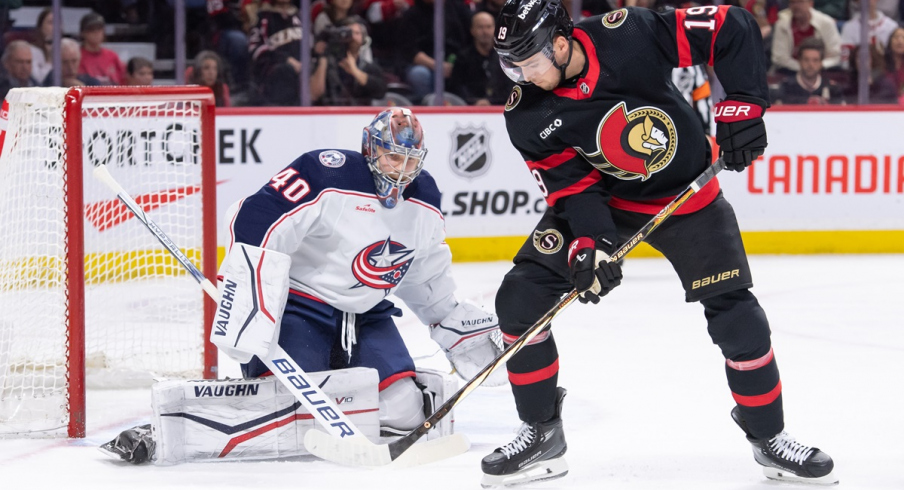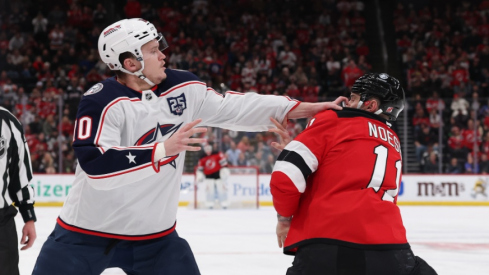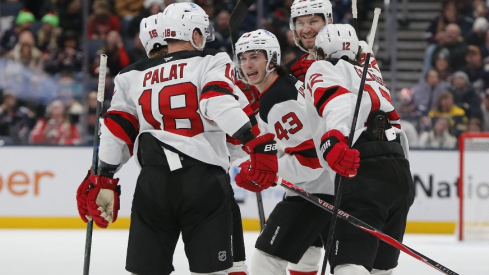The Columbus Blue Jackets penalty kill has been a genuine rollercoaster this season.
In October and November of 2023, the club was 2nd in the NHL with an impressive 89.2% penalty kill rate, trailing only the Los Angeles Kings. This was at odds with their lousy 7-13-4 record and was a bright spot in an otherwise difficult start to the season.
But since December 1st, the club's penalty kill has been truly terrible, to the tune of dead last in the NHL with a 66.3% "success" rate. That number is intuitively bad - the other team scores on 1/3 of their chances, sure, but is much worse when actually put in context. The 31st worst kill, for example, is at 71.6%. The 29 goals they've given up in this timespan coincides with a relatively league-average number of times shorthanded (86).
So, why? What has changed?
One theory is the absence of players like Boone Jenner, Sean Kuraly, and Zach Werenski, who all missed notable time with injuries. But all three have returned to the lineup for long enough that it's clearly not solely a personnel issue.
Another theory I had was goaltending. This tracks a bit more than simply the absence (and subsequent return) of a Jenner, for example. Per NaturalStatTrick, in October and November, Elvis Merzlikins was first in the NHL among all 37 qualifying goalies (50 mins TOI) with a .956 save percentage while shorthanded. Since then, he's 36th of 43 goalies (Note: I used Merzlikins as a proxy as the other netminders didn't have a large enough sample to qualify. This isn't to suggest that they performed as well or as poorly, but the point remains). So it's goaltending, right? Not so fast.
The below visual from HockeyViz shows the typical penalty-killers so far this season. They've leaned heavily on defenders like Ivan Provorov, Erik Gudbranson, and to a lesser extent Andrew Peeke. All three have similar profiles - big, perceived shutdown defense types with a defense-first mindset. Similarly, the forwards listed below, like Cole Sillinger, Kuraly, Alexandre Texier, and Justin Danforth represent a grinder. Put another way, the Blue Jackets' "best players" aren't necessarily leaned on for penalty killing. I can't blame the coaching staff for that decision. Instead, that falls on management. Teams that contend for the playoffs aren't afraid to play their best players in all situations. But Johnny Gaudreau and Patrik Laine are not well-rounded enough to be penalty-killers. That's not just my opinion, it's clearly shared by Pascal Vincent.
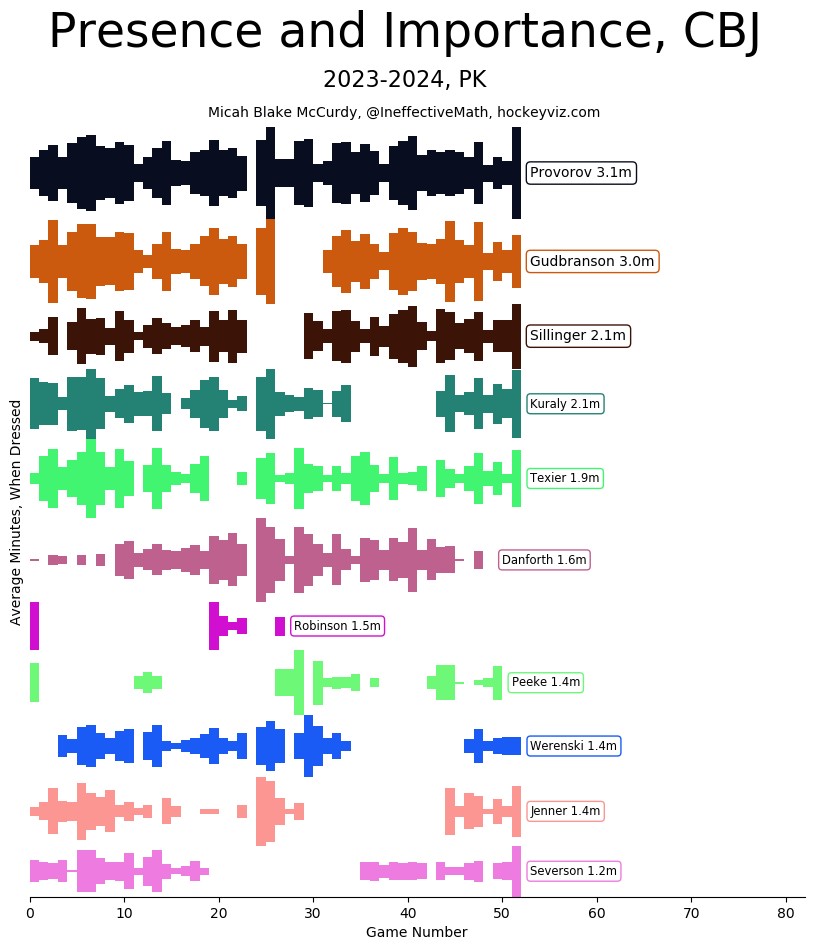
The last theory I want to bring up is simple penalty-killing habits. The club gave up two power-play goals last night, both to Brady Tkachuk. The second goal is a bit unique in that it was a defacto 5v3 after Provorov was stung with a slapshot and couldn't get up. But the first goal was basically a 'how-not-to' in defending.
Brady Tkachuk finishes off the beautiful setup from Giroux and Norris for a power play goal!#GoSensGo pic.twitter.com/kINEVSmded
— Hockey Daily 365 l NHL Highlights & News (@HockeyDaily365) February 14, 2024
Check out the below freeze frame. The Blue Jackets are clearly worried about a triangle passing play between Claude Giroux (puck carrier), Tkachuk (down low), and Shane Pinto (slot). That's why you see Werenski flanking his stick out to defend the low pass, and you see Bean caught in between Tkachuk and Pinto. But Kuraly is ultimately the reason this goal happened, as he allows a seam pass to go from Giroux to Tim Stützle, who deftly one-touches back against the grain to Tkachuk for the empty net goal. Look at how much time and space Giroux has to thread this pass. The Blue Jackets are basically hoping that Giroux - a borderline Hall of Famer - is incapable of making a skill play. They were wrong (Note: Stützle makes a great play to drift lower once Kuraly's back is turned to him).
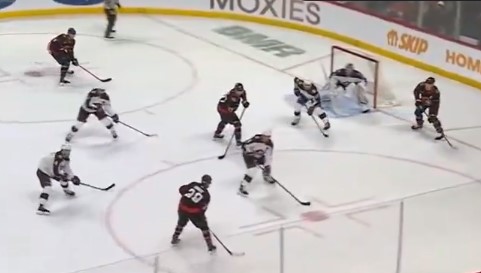
The Blue Jackets four killers didn't manage to so much as slow down, much less break up, either of the two seam passes that led to the goal. This goal is simply one of the 29 power-play goals the Blue Jackets have surrendered since Dec 1. It's not a lack of experience on the ice. It's not on the goalie for failing to make a save. So it's on the players, as usual, to make a play. The lack of pressure applied to the power play is certainly cause for concern. And after a weird start to the season, it tracks that a team that is 29th in the NHL standings is also a basement dweller in other metrics, like the penalty kill.
